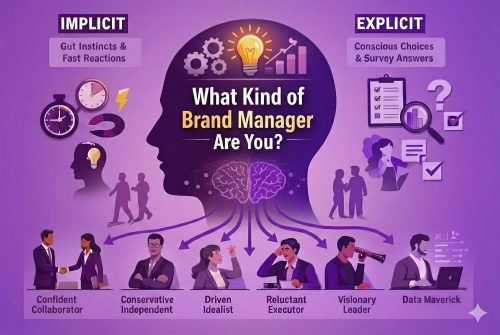A recent YouGov survey indicated that only about 1 in 10 Britons want to return to life as normal. Indeed, as virtually everyone has been affected by COVID-19 I think we are all aware by now that when the lockdown is over the new ‘normal’ will be very different to the pre-virus normality.
It is clear that there will be, and indeed as we are currently seeing, many personal and social changes, and these are sure to influence consumers in the long run. The message here is that brands need to understand these changes and their likely effects on their business, so they can better plan for the demands in the new normality.
Change would occur for two main reasons. Firstly, having experienced such a dramatic change in our lives, we have been exposed to new or at least different set of circumstances and these have subjected us to new ideas, new brands, products and services, and new ways of seeing the same things. Secondly, we learned that those with underlying health conditions were more likely to become seriously ill, so in anticipation of this happening again in the future, people will want to feel healthier and better able to cope. It is not just governments who will have learned an important lesson about preparedness for such a crisis, we too as individuals, as families, as colleagues, and as neighbours will want to be better prepared.
So, the obvious prediction I have heard several times is an increase in healthier foods, especially foods aimed at being preventative. I have to say, though, that I did notice some of the healthier foods (fresh fruit and vegetables, and especially the organic ones) were not the first items to run out in the supermarket during the panic buying. Instead, ready meals, like pizza, tinned soups, tomato ketchup, and fizzy drinks were first to go. There is too the perceptions that items that fit into the luxury category were less needed and not essential.
“It’s strange how the economy is about to collapse because people are only buying what they need…”
– a meme that did the rounds on social media around 14th April.
Some consumer behaviour is unlikely to change. For example, our need for basic foods, such as dairy products, rice, pasta, bread, fresh fruit and vegetables will continue pretty much as they did before, but our relationship with them and especially the way we consume these products may change. We may see an increase in consumption of foods that have a longer shelf life, such as tinned and frozen foods. We may find more people baking their own bread or certainly preparing their own food rather than buying pre-prepared meals. Hence, we may see a surge in home baking materials (these were some of the first products to be sold out during the earlier days when panic buying was prevalent). Moreover, we may witness a strong ‘grow-your-own’ trend, with people turning the lawned area of their garden into a vegetable patch.
Or will we? The opposite is also possible. After being cooped-up for several months we may see a drive towards prepared foods, pre-cooked meals, takeaways, and of course eating in restaurants, as people grasp the opportunity to be waited on. A good example of this is when New Zealand eased the lockdown and everyone flocked to McDonalds, which soon ran out of products. What was once taken for granted becomes a forgotten but revisited pleasure.
Will we see indulgence on a sudden intense scale? It reminds me of that YouTube video of a herd of cows jumping for joy in the field having been cooped up in the barn over the winter. Yet this may be countered by the surge in unemployment and lack of spending power that may exist. Many businesses and even famous household brand names will be lost, especially those with products and services that were overly dependent on face-to-face contact and travel, such as high street shops, tourism and related industries. Those with an online presence were better able to adapt. It shows that businesses always need to be adaptive and resourceful and less reliant on a single product or one specific way of delivering their product.
The before-after aerial images of China and Italy have brought home the dramatic influence of human activity on the environmental pollution. We have also seen images in the media of animals roaming deserted city streets. Will this raise environmental consciousness? Will people seek more locally sourced food and products? Will people choose more local destinations for their holidays? Or will we behave like those unleashed herds of cows and visit places we have yet to tick off from our bucket list, so making up for lost time?
Having discovered that much of their workforce are able to work from home quite successfully, we may see companies encouraging this more and so reducing their overheads, or at least to free up crowded offices. Consequently, city centres may become less busy and the beleaguered high street may suffer further. Online entertainment services like Netflix and game apps have flourished during the lockdown. In the new normality, home entertainments may become more attractive and less expensive than the cinemas, theatres, rock venues, and so on. Yet, having been deprived of rock concerts, sports, and other community events, people may flock to them in unmanageable numbers.
It raises the question of which industries will see a huge and dramatic increase in demand and which will see a continued decline. There may be two responses to social isolation, one inhibited like newly released prisoners unable to cope with too much stimuli in their environment or the newly freed herd of cows jumping for joy in the field. People the world over have been traumatised. People cope with trauma in different ways. Many have enjoyed mutual support from, and a greater reliance on friends, family and neighbours. In many cases these would have strengthened our relationships, while others would have had their weaknesses exposed. We may also value resilience more, and as individuals strive to become more resilient. So, people may explore activities and events related to self-improvement rather than seeking to be ‘merely’ entertained. We may also come to rely less on gurus, prophets, or celebrity commentators, and more on expertise and science-based decision making.
“In the rush to return to normal, use this time to consider which parts of normal are worth rushing back to”
– Lawrence H. Gerstein, Director, Center for Peace and Conflict Studies https://www.bsu.edu/academics/centersandinstitutes/peace/outreach-and-services/covid-19-peaceful-strategies
Aside from the obvious changes, such as fewer cash transactions, the end of hand-shaking, a new trend in fashionable masks, more online shopping, and a greater value for those in essential occupations, there will be other changes that we cannot predict with any degree of accuracy so soon unless we begin to ask those questions. Which products and services will see a burst of new demand and which will struggle? How should businesses adapt to the new normality in their sector?
It reminds me of that feeling we call ‘pins and needles’ – when our arm has ‘gone to sleep’ and feeling suddenly returns (translation). As the nerves in our arm receive new blood supply, so they make their presence known, and it hurts! So, too for some industries as demand dramatically increases, if they are not prepared for it, it could be very painful and a lost opportunity. So doing their market research now will pay dividends later. For other brands and services where demand will wane, they need to do their research now to understand how they can best adapt to what the consumer will want in the new normality.
In trying to understand the impact of the pandemic on consumer behaviour in the surveys we have been conducting, we have developed a scale to measure coronavirus-induced anxiety. It has thrown new light on the differences between those with low and high anxiety and how they behave as consumers. Several of our surveys have revealed that natural worriers and those who worry about coronavirus more than most, evaluate brands, products and services in many different ways to those who seldom worry, and this has important implications for businesses.
Finally, as a psychologist I’ve been interested and concerned about how those with obsessive-compulsive disorder (OCD) have reacted to the pandemic. One feature of OCD is a fear of contamination and many of their symptoms are a response to this, such as regular hand washing, keeping a distance from other people, not touching door handles and the like, holding their breath when someone sneezes, and similar, all to reduce the chances of becoming contaminated with a disease. These are the very behaviours that everyone has been encouraged to adopt. It seems that those with contamination OCD were right all along and have just been waiting for the rest of the world to play catch up! So, ironically, while therapists have been trying to use exposure therapy to help recovery from contamination OCD (by showing that exposure to the source of the fear does not result in negative consequences), the pandemic has rewarded their behaviour and their fears. In this article, we have only been able to touch on a handful of potential personal and social changes, and how these may influence consumers in the long run. Brands really need to understand these changes right now so they can better plan for the demands in the new normality.
Get in touch with our specialists now via our contact form.

Latest Posts
Join Our Newsletter
Subscribe to our email newsletter to keep up to date with our latest insights, news, and findings on market research, implicit testing and our occasional psychological ‘neuro-nuggets’ of wisdom.
Our blog

What Kind of Brand Manager Are You?
If you’re a brand manager, you may plan carefully, but a lot of how you work day to day probably comes down to habit and

When it comes to research, is everyone biased?
Well yes, as a matter of fact, everyone is There’s no shame in it. We’re all biased in some way or another, although understandably we’d

Market Research with Human and Synthetic Respondents
The idea of synthetic respondents in market research arises from a desire to simulate human responses using artificial intelligence. Instead of collecting data from real

